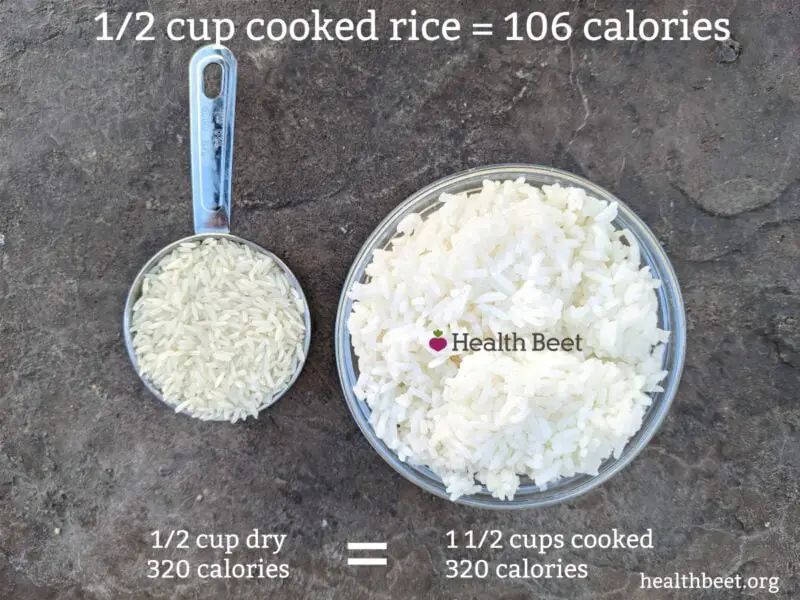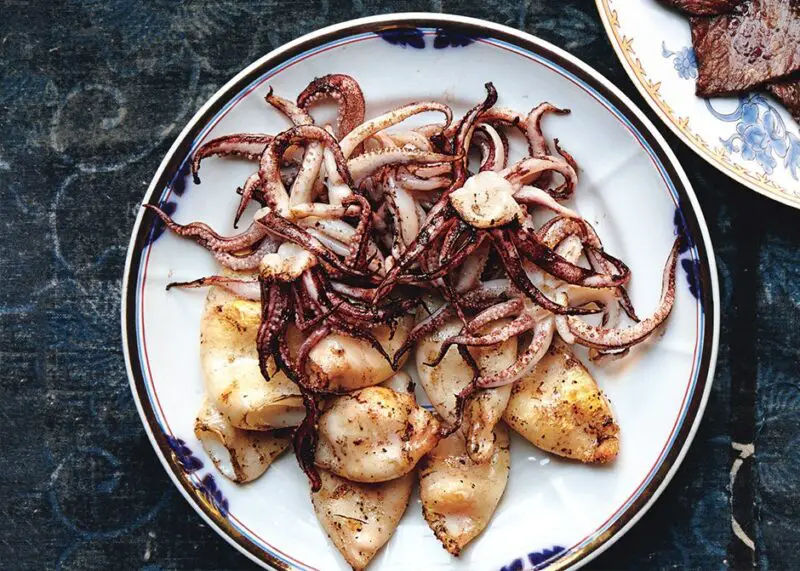Cooked or Uncooked Rice – Which Should You Measure for Calories?
Calorie counting has become an essential tool for tracking food intake, especially for those watching their weight or trying to maintain a healthy lifestyle. Rice is a staple food for many people around the world, and it’s important to measure rice serving sizes accurately to track daily calorie intake consistently. However, the question remains – should you measure cooked or uncooked rice for calories? In this article, we’ll explore the nutritional value of rice, the science behind cooking rice, how to measure rice for calories, and the impact of measuring cooked or uncooked rice. We’ll also discuss common misconceptions and mistakes made while measuring rice calories as well as tips for accurately tracking your intake.
Understanding Rice Nutrition
Rice is a good source of carbohydrates, providing energy to the body. It also contains small amounts of protein and fat. One cup (165 grams) of cooked white rice provides 205 calories, 44 g of carbohydrates, 4 g of protein, and 0.5 g of fat.
Measuring serving sizes correctly is essential when determining daily calorie counts. Failure to do so can lead to overestimating or underestimating caloric intake, which can ultimately hinder health goals.
The Science Behind Rice Cooking
Rice is typically harvested in its raw form with outer husk intact. The husk protects the grain from external contaminants such as insects and disease. Before cooking the rice, the outer husk is removed using a milling process that leaves behind the inner layer called bran. The bran is then further removed by polishing to produce white rice.
When raw rice grains are cooked in boiling water or broth, they absorb water and increase in size. As a result, cooked rice weighs more than uncooked rice. Additionally, the carbohydrates in cooked rice become more digestible as a result of the gelatinization process that occurs during cooking. This makes cooked rice easier for the body to break down and absorb as compared to uncooked rice.
Water absorption during cooking can significantly impact the calorie count of rice. One cup (185 grams) of uncooked white rice can yield 3 cups (640-660 grams) of cooked rice. Due to this difference in size and volume, measuring uncooked rice for calories may be different from measuring cooked rice.
Measuring Rice for Calories
When measuring rice for calories, it’s important to note the difference in calorie count between cooked and uncooked rice. Measuring the correct amount of rice is vital because a slight variation can lead to an increase or decrease in calorie intake.
How to Measure Uncooked Rice for Calories
To measure uncooked rice for calories, use measuring cups or kitchen scales. One serving of raw rice typically constitutes ½ cup (90 grams) or 1 cup (180 grams) per person, depending on your calorie needs.
There is also a conversion factor used to calculate the calorie content of uncooked versus cooked rice. A general rule of thumb is that one cup (185 grams) of uncooked white rice contains approximately 675 calories, which can yield three cups (620-640 grams) of cooked white rice with 675 calories in total.
How to Measure Cooked Rice for Calories
There are two ways to measure cooked rice: volume and weight.
- Volume: Measure cooked rice using a measuring cup or scale after cooking it. One serving of cooked white rice is usually about 1 cup (160- 200 grams) per person, depending on your calorie needs.
- Weight: Measure the cooked rice by weighing it on a kitchen scale. One serving of cooked white rice usually weighs between 180-220 grams depending on your calorie needs.
Another way to measure cooked rice is by using nutrition facts labels. For instance, a typical cup (185 grams) of cooked Basmati rice contains approximately 205 calories, 45 g of carbohydrates, 4 g of protein, and 0.5 g of fat.
Impact of Measuring Cooked or Uncooked Rice for Calories
If you measure the wrong type of rice or the wrong amount of it for its corresponding calorie content, it can lead to overeating or under-eating – both can have significant impact on your health goals.
For instance, if you measure uncooked rice instead of cooked rice, you could end up consuming more calories than you had intended to consume. Conversely, if you measure cooked rice instead of uncooked rice or the wrong measurements overall, then you might end up consuming less food than your body needs in a day which could result in malnutrition and a slow metabolism.
Factors Affecting Rice Calorie Count
The calorie content of different types of rice varies significantly due to differences in nutritional composition and the cooking process used.
Brown rice has higher fiber content than white rice and takes longer to digest, making it an ideal option for those looking to lose weight. Black rice contains more antioxidants than any other type of rice but is rare and expensive. Wild rice isn’t technically a true type of rice but rather is found in North America’s freshwater rivers and lakes. It has a nutty flavor and is high in fiber, making it ideal for filling one up without consuming too many calories.
Other factors that can affect the calorie count of rice are seasoning and cooking method (boiling, frying, or steaming).
Common Misconceptions About Measuring Rice Calories
One common misconception is that raw and cooked rice have similar calorie values. Raw rice seems to have fewer calories than cooked rice, but this is incorrect because raw rice is denser than cooked rice.
Another common misconception is that the length of time a person cooks rice does not impact its nutritional value. This belief might have some validity, but cooking could result in changes in water absorption and the breakdown of complex carbohydrates into simpler sugars which consequently impacts the calorie count of the final product.
Common Mistakes in Measuring Rice Calories
The most common mistake made while measuring rice calories is failing to follow proper measuring techniques. A tablespoon or cup that includes excess or less volume of ingredients may provide an inaccurate representation of a measured serving size. Folks often tend to pour roughly a handful of rice known as “palm measurement”, which could be higher than the recommended serving size.
Another mistake regarding measurement happens when people forget to factor seasoning or oil used in cooking which increases the calorie content of the rice dish.
Tips for Accurately Measuring Rice Calories
- Be consistent: Measuring servings when you begin a new food intake tracking regimen aids keeping track of progress and making positive changes.
- Prioritize proper technique: Use accurate measuring spoons because overestimating or underestimating a serving size can lead to eating too many or too few calories.
- Take into consideration the extras used: If you add seasonings like sugar, salt or oil to your rice during cooking, factor this in when calculating the total calorie content.
- Preparation is key: You should cook measurements of rice, store them in individual servings, and use these bags to cook as necessary. This strategy ensures that accurate portions are used every time.
Conclusion
Measuring rice calories accurately may seem insignificant, but it plays an essential role in achieving health and nutrition goals. It’s important to understand the differences between cooked and uncooked rice and to measure serving sizes consistently. Factors such as different types of rice, seasoning, and cooking methods all affect the calorie count of rice. Common mistakes such as failing to follow proper measuring techniques or forgetting to account for seasoning can lead to inaccurate measurements that could ultimately impact health goals negatively. By following tips for accurate measurement and tracking, we can ensure that we consistently monitor our calorie intake for optimal health benefits.
Frequently Asked Questions
1. Can I measure cooked rice for calorie count?
Yes, you can measure cooked rice for calorie count. However, the measurement and calorie count will differ from raw or uncooked rice as the cooking process changes its weight and nutritional value.
2. Which measurement is more accurate for counting calories in rice, cooked or uncooked?
Uncooked rice provides a more accurate measurement as it doesn’t have any added ingredients or absorbed liquids during cooking, making it easier to calculate its nutrient content.
3. Is there a significant difference in measuring cooked and uncooked rice when it comes to calories?
Yes, there is a difference in measuring cooked and uncooked rice when it comes to calories. Cooked rice has a larger volume than uncooked rice due to water absorption during cooking, making it less calorie-dense per volume compared to its uncooked counterpart.
4. How do I accurately measure my rice’s calorie content?
To accurately measure your rice’s calorie content, you need to start by measuring your uncooked rice using a kitchen scale before cooking it. Once the rice is cooked, weigh the final product and divide by the original weight of the uncooked rice to determine how much water was absorbed during cooking. Use this percentage to adjust your calorie calculation accordingly.







